The Hypercam AA24CFX 14-bit colour camera's large sensor requires a telescope that can provide a suitable wide and flat imaging circle with good colour correction.
We matched the camera to our 150mm triplet refractor, which gives a flat image circle of 44mm, and illuminates the sensor with minimal vignetting issues.
Conveniently, the front thread on the camera is M54 x 0.75mm, which allows for an unobstructed light passage.
Optional reducing flanges could reduce this down to M48, but we were able to take advantage of the larger fittings on our equipment.
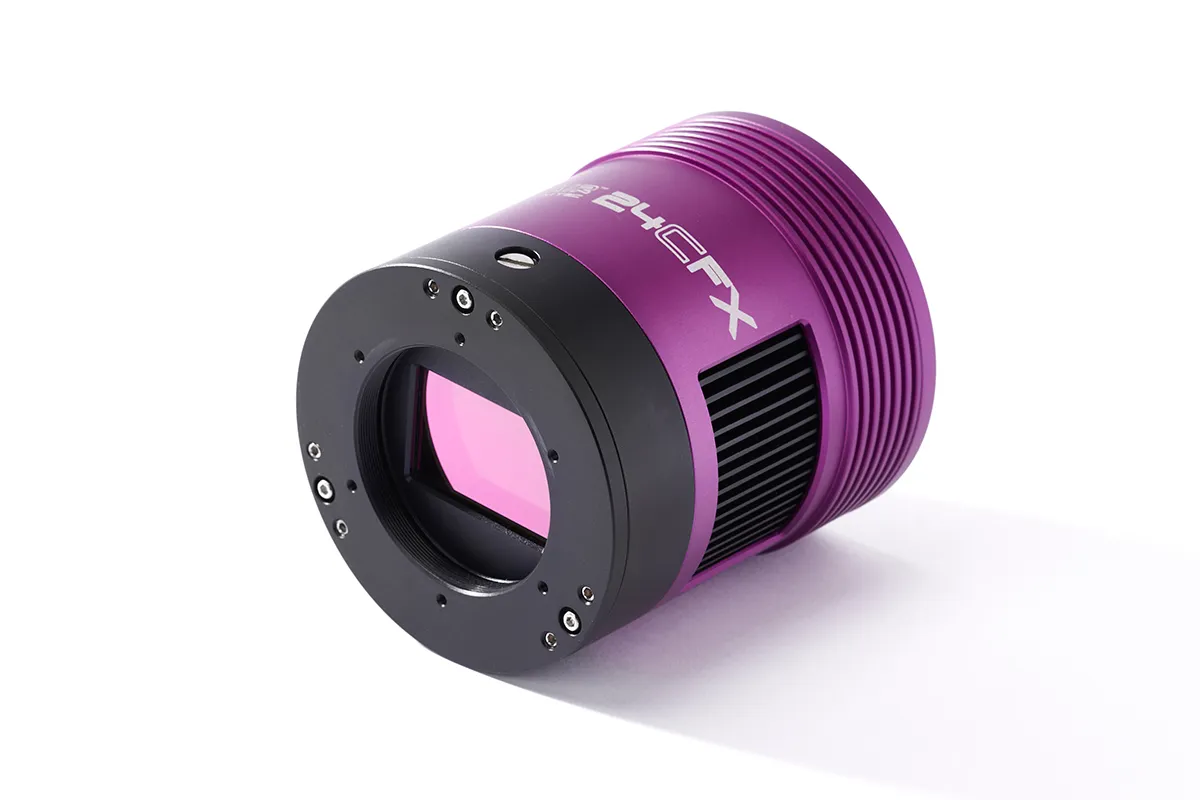
As a colour camera with an IR+UV (infrared and ultraviolet) filtered sensor window we found that no additional filters were necessary, and we were able to mount the AA24CFX directly onto our telescope.
It’s also possible to use modern multi-band filters with this camera, with consideration for maintaining an unobstructed light path.
Setting up the camera proved straightforward, even though our computer didn’t quite meet the high-end specifications recommended (these are a Windows 10 Pro 64-bit operating system; an Intel processor i7; and 16GB RAM).
Backup drivers are provided on a disc, but we downloaded the latest ones from the Altair Astro website, and when we plugged in the camera it was immediately recognised and ready to run with the AltairCapture software.
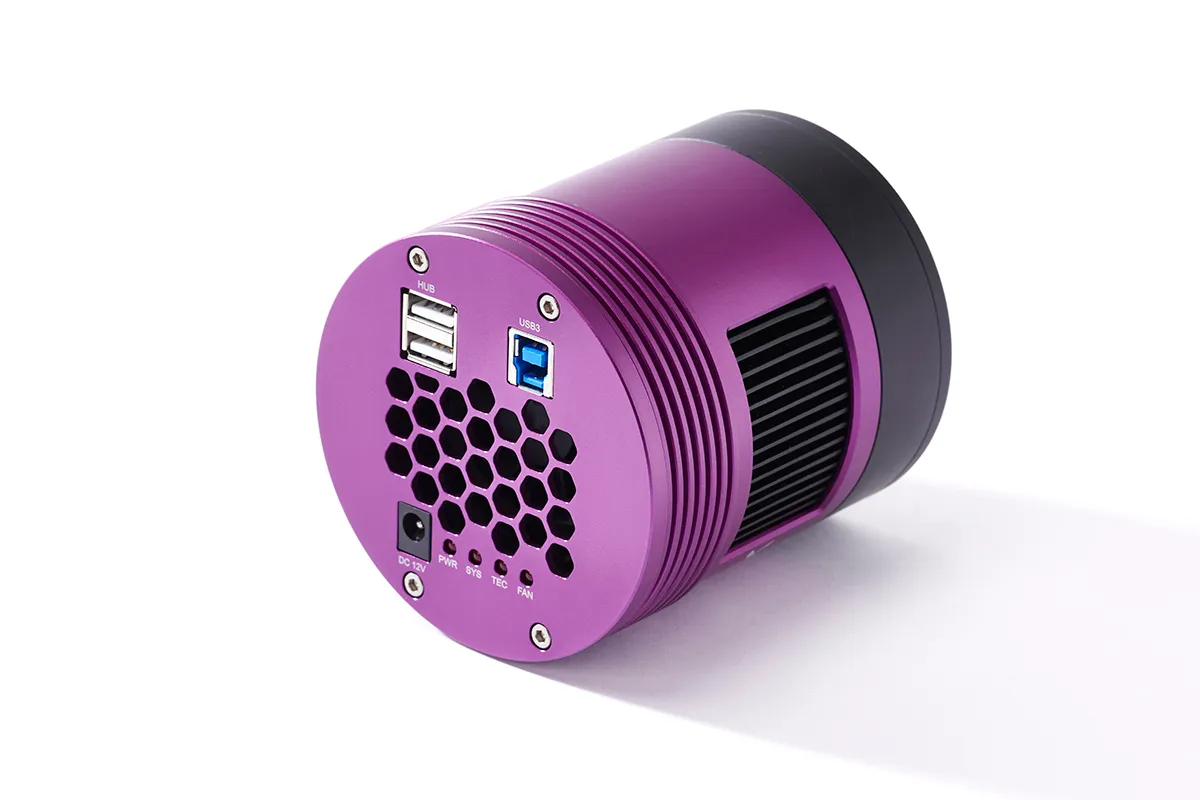
It is worth noting that the AA24CFX requires a 12V DC power supply; a basic PSU (power supply unit) with a mains plug is provided in the package, but for convenience we were also able to run it using our observatory’s 12V supply.
Once running we turned on the thermoelectric cooling (TEC) system and let the camera stabilise for a few minutes, allowing it cool down to a sensible –10°C.
Even with such a large chip, the USB 3.0 connection is a speedy interface, and we used live focusing with a steady frame rate to ensure good focus.
Naturally, this large camera isn’t designed for fast frame-rate applications like planetary imaging, but we were getting about 5fps in full frame, 14-bit mode, and up to 15fps with a smaller region of interest setting.
These results demonstrate how well the 24MP sensor produces the smooth transfer of large amounts of data.
The AA24CFX is a CMOS camera that offers a range of gain settings.
To ensure that we can get some usable images for a review we normally start off by using low gain, which gives us a predictable and useful point of reference.
Next, if the skies allow it, we can go on to experiment with other settings.
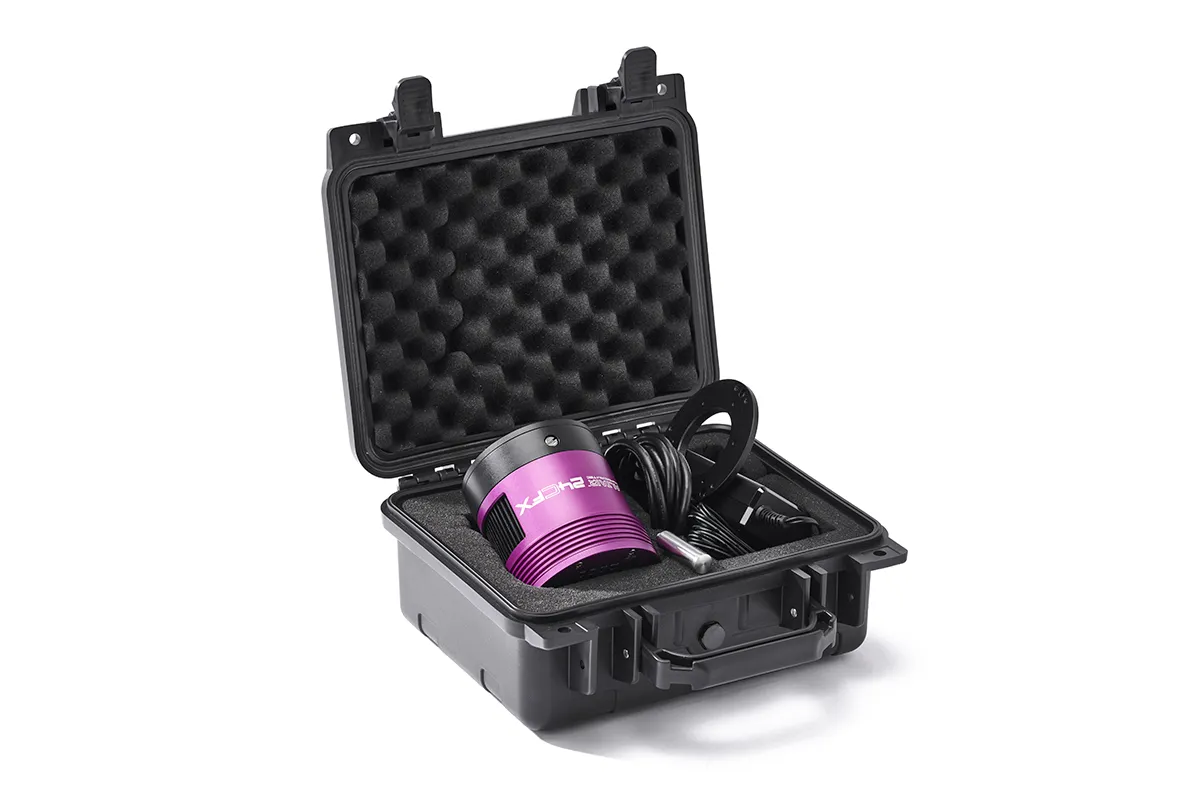
Low gain settings require longer exposures, and these can highlight issues with noise (unwanted artefacts), dodgy pixels or amp glow. In this regard, the results from the AA24CFX were simply exceptional.
We took a series of individual 15-minute exposures, and then stretched them to see the results.
There was no visible amp glow whatsoever, and the overall lack of noise and hot or cold pixels produced excellent images.
These proved to be very acceptable, even without additional calibration using dark frames.
Once stacked, we found that a series of 10- and 15-minute exposures we had taken of the Andromeda Galaxy, M31, revealed fantastic details within the arms of the galaxy.
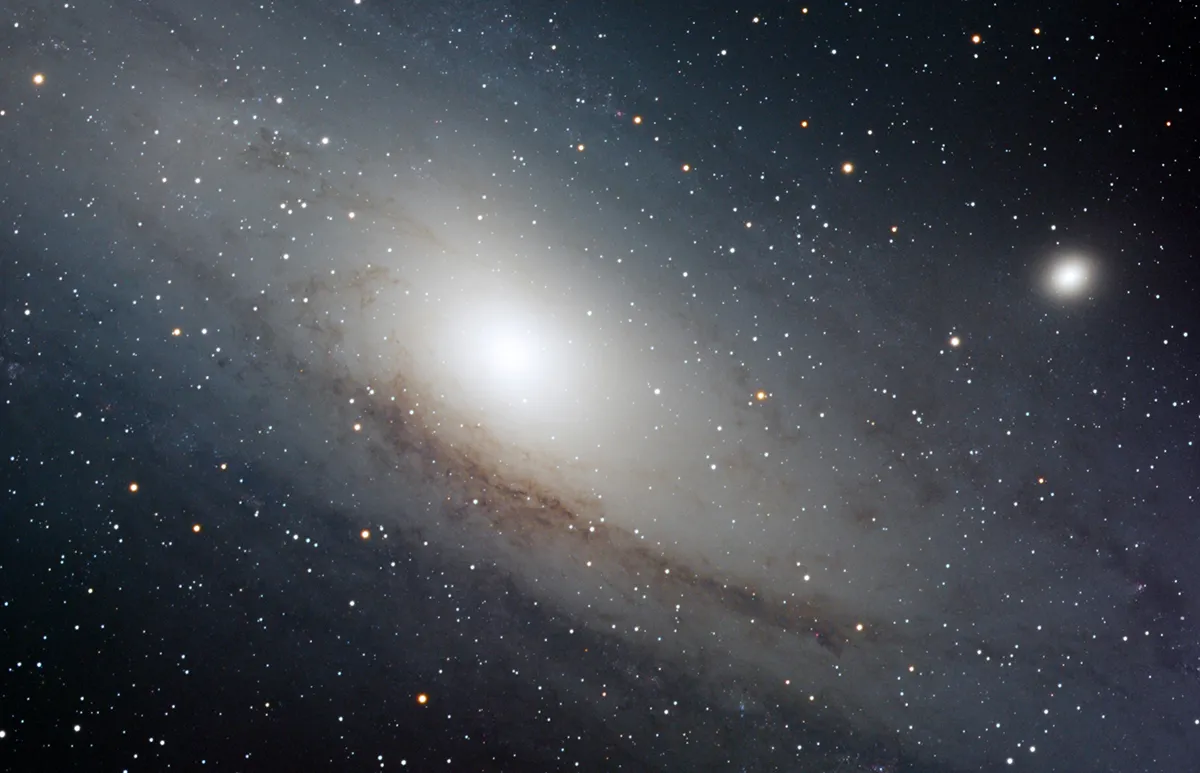
Hints of star-forming regions showed up as reddish purple, while star clusters and groupings were picked out in remarkable detail.
The colours at the galaxy’s centre, which is extremely bright, were well controlled, and this allowed the natural colours of the dust lanes to shine through.
The impressive results continued when we tested the AA24CFX on a range of larger objects; it hoovered up the details in deep-sky objects like the Pleiades, M45, the Double Cluster (NGC 869 and NGC 884) and the Pinwheel Galaxy, M101.
Remarkably, a 10-minute test image of spiral galaxy NGC 891, taken in suburban skies, revealed a multitude of tiny background galaxies – dozens of them, with over a hundred in one frame.
Tthe AA24CFX is an extremely capable, large format, low-noise camera, which is capable of producing stunning images.
Hypercam AA24CFX's CMOS sensor
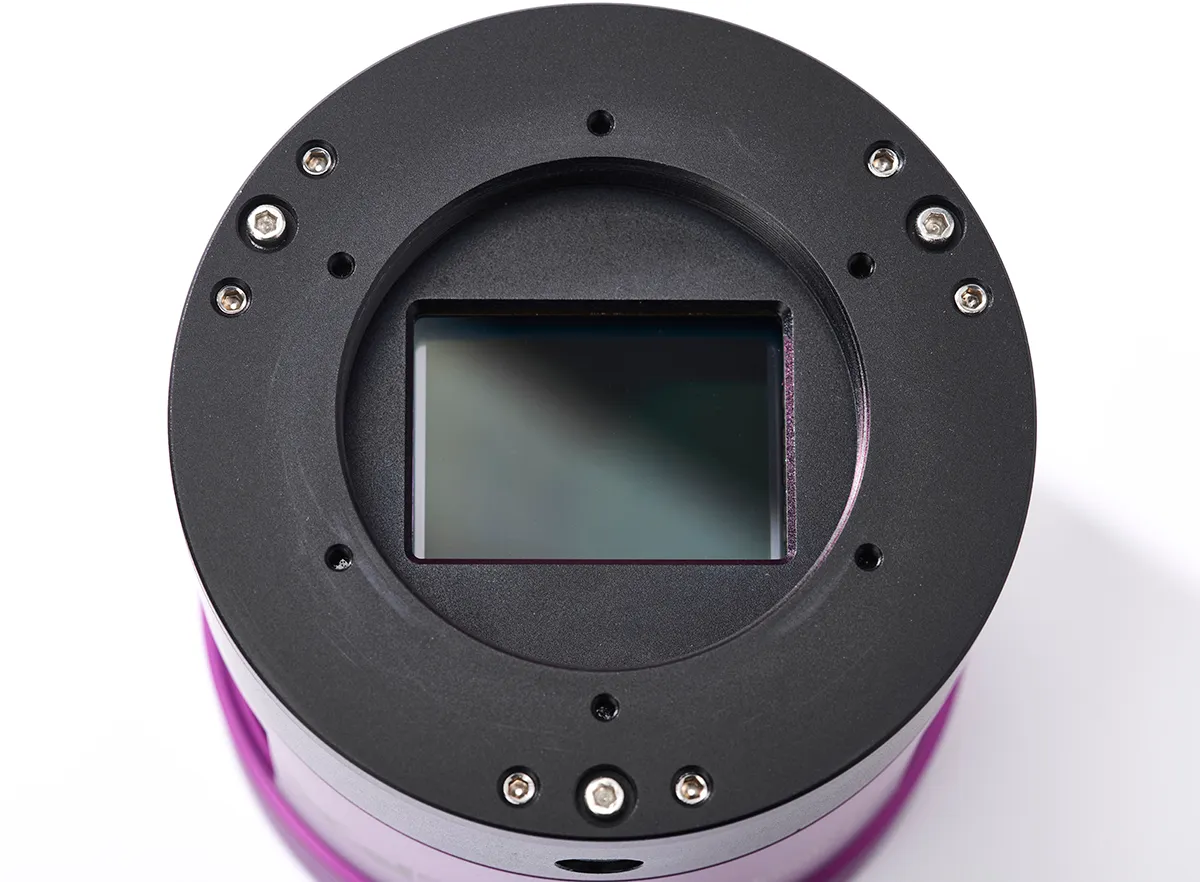
The full-frame CMOS chip in the AA24CFX is 36mm x 24mm, offering a considerable 864mm² of image-capturing area.
The sensor, an IMX410, is a back-illuminated unit made by Sony, and the pixels are arranged in a 6,064 x 4,040 array.
This makes the individual pixels comparatively large, hence the sensitivity is enhanced while unwanted noise is reduced.
The typical arcsecond/pixel ratios you get with telescopes (such as large refractors, SCTs and Newtonians) make this camera a sensible choice as a high-performance, one-shot colour option.
As a 14-bit camera, the AA24CFX has a range of over 16,000 levels of grey available, and this impressive dynamic range enables it to handle very bright features in deep-sky objects alongside very faint ones.
Indeed, when we stretched the images of bright young stars in M45 to reveal the much fainter reflection nebulosity and dust that surrounds this popular object, they were not blown out.
In fact, the ability of this sensitive camera to dig out extremely faint, tiny galaxies from mediocre suburban skies is really impressive.
Hypercam AA24CFX 5 best features
1
AltairCapture software
Although it’s compatible with a host of imaging applications, Altair’s own capture software allows easy and full control of all aspects of the camera, including the window heating and sensor cooling settings, offering you a quick choice between gain settings, bit depth, region of interest and image capture details.
2
Compact, balanced design
Despite the demands of design imposed by the large imaging sensor, the overall size and weight of the AA24CFX has been kept within sensible proportions. At 710g, the round barrel design sat comfortably on the telescope used for this test without making uncomfortably heavy demands on the mount or focuser.
3
USB 2.0 hub
A two-port USB hub on the back of the camera allows you to attach it to low-demand USB devices, such as a filter wheel, autofocuser and so on. The camera needs a good-quality USB 3.0 lead no more than 2m long to get the best performance.
4
Thermoelectric cooling
Capable of reaching –35°C below ambient temperature, the large heat sink and quiet fan combine with a thermoelectric cooling (TEC) unit to hold stable temperatures when chilling the sensor. The optical window has an adjustable heater to avoid dewing up during imaging and is guaranteed to remain frost-free for two years.
5
Hard case
A moulded armoured plastic case with foam inserts is provided to protect the camera from damage while transporting or storing it. Inside are cut-outs that allow the camera – along with a 12V power supply unit, leads and USB 3.0 cable – to be stowed neatly in one place. Padlocks can be used to secure the case if necessary.
Vital stats
- Price: £2,799
- Sensor: Sony IMX410 CMOS Colour
- Resolution: 24MP, 6,064 x 4,040 pixels
- Pixel size: 5.94 micrometres
- Size: 100mm x 92mm diameter
- Weight: 710g
- Accessories: 1.5m USB lead, 12V PSU, hard carry case
- www.altairastro.com
- Tel: 01263 731505
This review originally appeared in the January 2022 issue of BBC Sky at Night Magazine.
